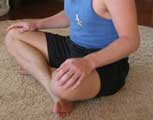|
| |
Crossing legs after a
stroke signals recovery
Main
Article page |
Beauty articles
|
Health page |
Computers|
Diseases |
Education |
Entertainment |
Family
Business |Fitness|
Fruits and Vegetables
|
Jobs |
General |
Personality|
Technology
|
Tourism |
Useful Tips
General Knowledge |
Biography Page|
Heroes & Incredible peoples
|
Inventions
Health Page|
Diseases and Remedies |
Articles|
List of diseases
People who are able to
cross their legs soon after a severe stroke are more likely to recover than
those who can't.
"Despite having severe strokes that left them with slight loss of movement, we
noticed that some people were still able to cross their legs, which is not as
easy as it seems," said study author Berend Feddersen.
"If this finding is confirmed, leg crossing may be an easy way to help doctors
determine who may have a better chance of recovery," added Feddersen of the
University of Munich, Germany, the journal Neurology reports.
People who were able to cross their legs within the first 15 days after a severe
stroke were more likely to have fewer neurological problems and lower death
rates, according to a Munich statement.
 The
study involved 68 people who had experienced a severe stroke who required
intensive care, including ventilation or need of circulatory support. The
study involved 68 people who had experienced a severe stroke who required
intensive care, including ventilation or need of circulatory support.
Two groups of 34 were formed; one group with leg-crossers and one with
non-leg-crossers. Participants were followed for one year and were tested using
several scales to measure disability and independence.
After one year, the study found that one person, or nine percent, died among
those who were able to cross their legs after stroke compared to 18 people, or
53 per cent, who died among those who couldn't cross their legs.
| |
|



 The
study involved 68 people who had experienced a severe stroke who required
intensive care, including ventilation or need of circulatory support.
The
study involved 68 people who had experienced a severe stroke who required
intensive care, including ventilation or need of circulatory support.